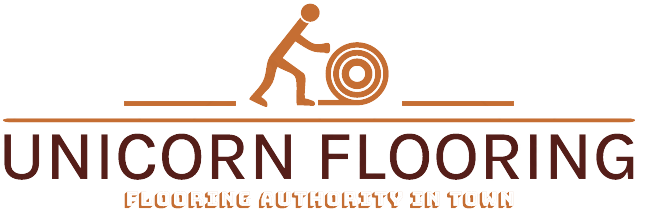Airport Hangar Flooring in Pakistan
Airport hangars are not ordinary industrial spaces. They store and service aircraft — expensive, heavy, safety-critical machines that demand a flooring system able to handle wheel loads, fuel spills, maintenance traffic, temperature swings, and high-traffic personnel movement. In Pakistan — where climate ranges from humid coastal regions to hot inland plains and cold northern areas — choosing the right hangar flooring requires balancing mechanical performance, chemical resistance, safety, maintenance, and cost.
This guide explains the hangar-flooring options available in Pakistan, selection criteria, installation best practices, maintenance, cost drivers, and practical recommendations so facility managers, contractors, and airport authorities can make informed decisions.
Why Hangar Flooring is special?
Hangars face stresses and exposures that typical commercial floors do not:
- High point and rolling loads — aircraft jacks, tugs, forklifts, and aircraft wheel loads concentrate stress on small contact areas.
- Chemical exposure — jet fuels, hydraulic fluids, de-icing agents, solvents and lubricants attack standard concrete unless treated.
- Abrasion & impact — tools, composite parts, cargo, and service vehicles create constant abrasion and occasional impact.
- Fire & heat risk — certain materials must meet fire-resistance or low-smoke/low-toxicity requirements.
- Static / ESD concerns — where sensitive systems or explosive vapors exist, electrostatic dissipation may be required.
- Large continuous areas — hangars are vast; seamlessness and long-life systems lower maintenance interruptions.
- Climate effects — Pakistan’s heat and humidity can affect selection and curing of resinous systems.
Because of these demands, hangar floors are typically specialized, engineered systems rather than off-the-shelf vinyl or tile.
Primary Flooring Systems for Aircraft Hangars
Below are the main flooring systems used successfully in hangars worldwide and applicable to Pakistan — each with strengths and trade-offs.
1. Urethane Cement (Ucrete / Urethane concrete)
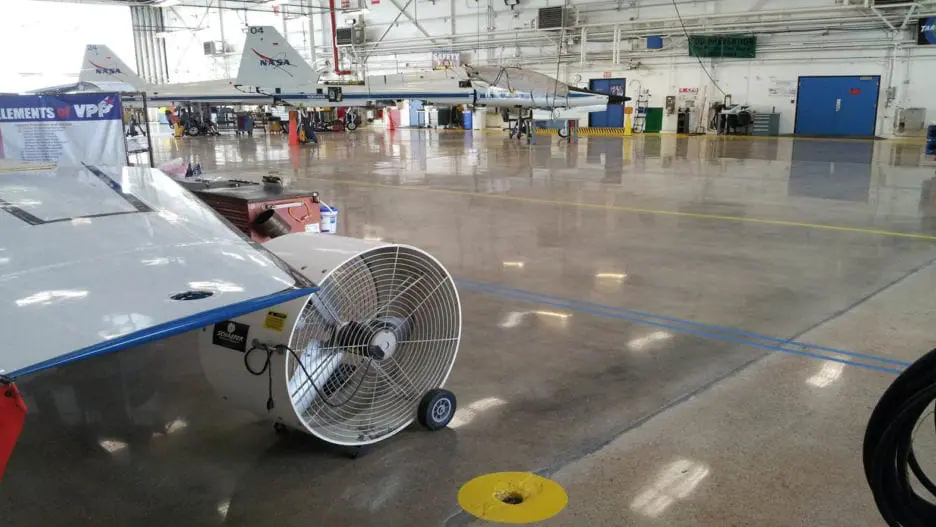
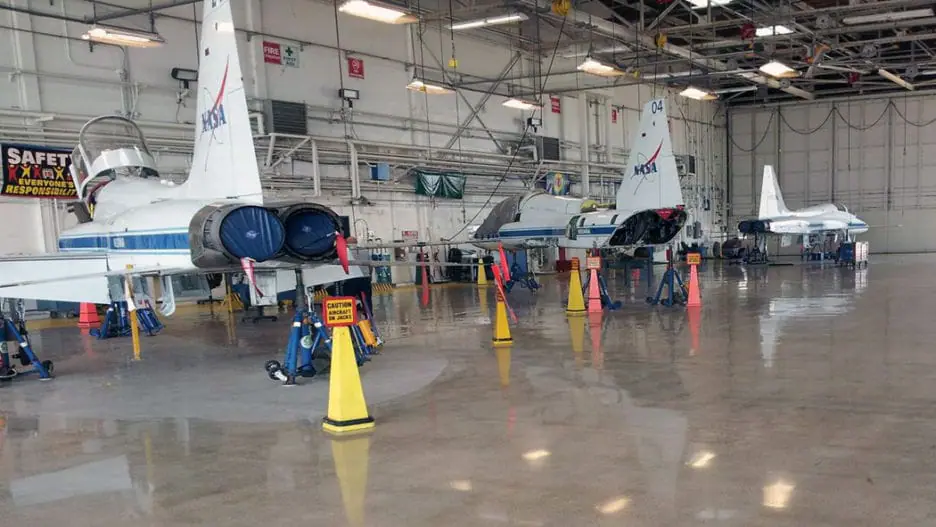
What it is: A cementitious, polymer-modified mortar installed at substantial thickness (6–12 mm or more).
Strengths: Exceptional impact and abrasion resistance, excellent chemical and heat resistance, rapid cure options for fast turnaround, good slip resistance.
Best for: Heavy-duty zones (maintenance bays, under jacks, parking areas).
Trade-offs: Higher material cost, requires skilled installers and careful substrate prep.
2. Epoxy Floor Systems (High-build epoxy)
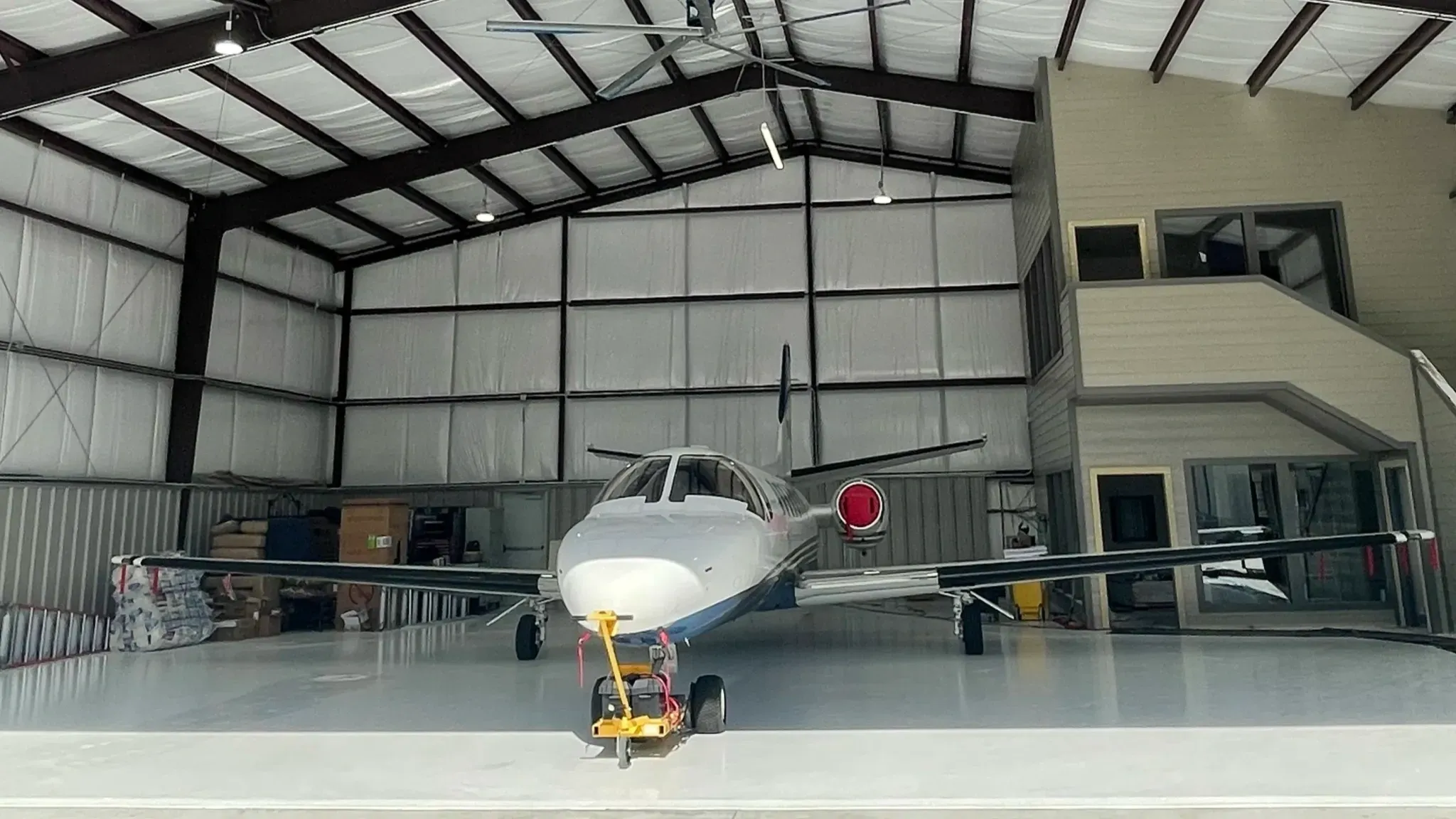
What it is: Multi-layer epoxy coatings or mortar systems (primer + high-build epoxy + top coat).
Strengths: Seamless finish, excellent adhesive bond to concrete, wide range of finishes (gloss, matte), good abrasion resistance.
Best for: General hangar floors, office and workshop areas, where chemical resistance is moderate.
Trade-offs: Epoxy can soften with prolonged high heat and some solvents; not always ideal where direct fuel contact is frequent unless formulated for fuel resistance.
3. Polyurethane (PU) and Polyaspartic Coatings
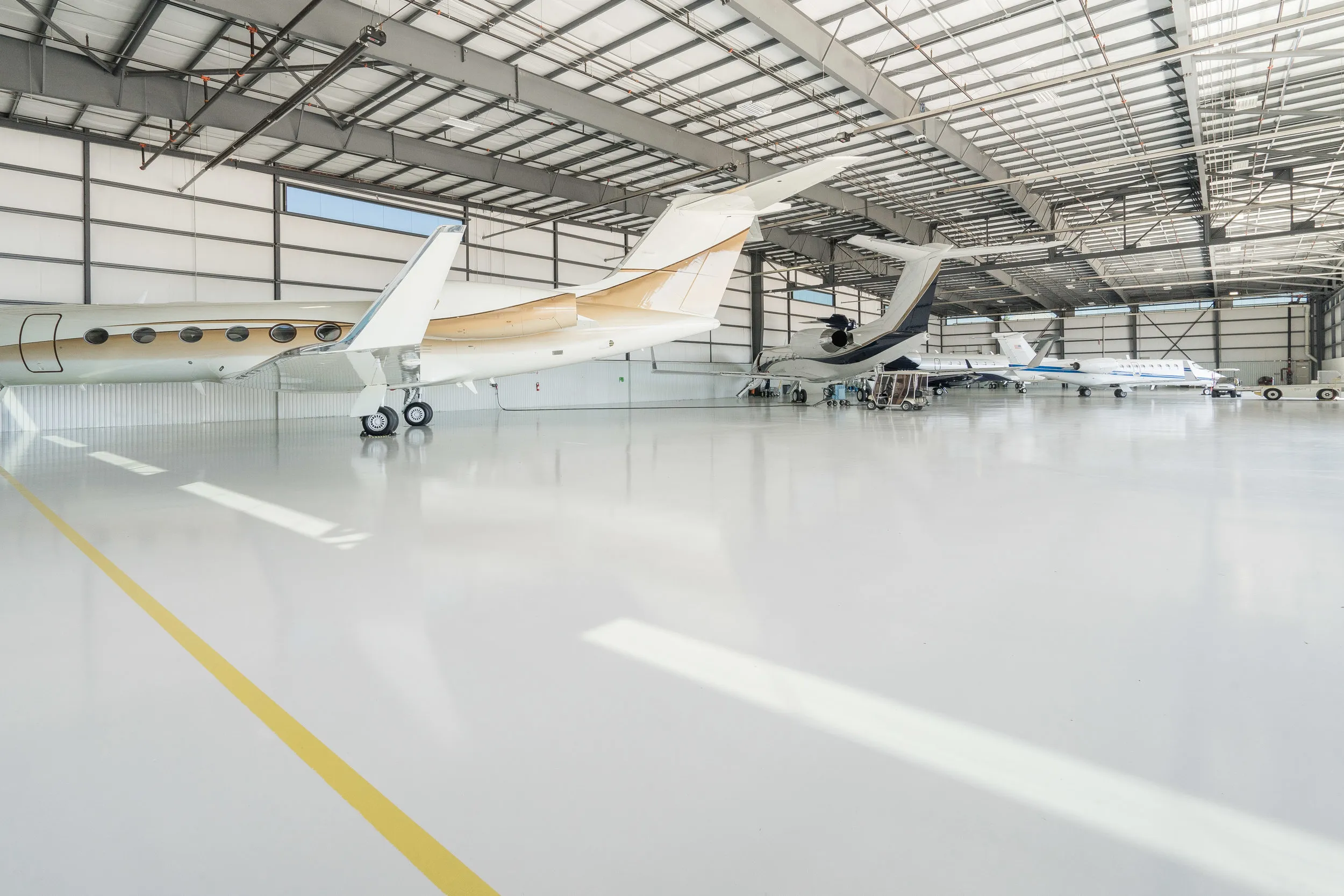
What it is: Resinous top-coats offering UV-stable, flexible finishes; polyaspartics are rapid-cure variations.
Strengths: UV resistance (won’t yellow), better flexibility than epoxies (good for thermal movement), fast re-coat windows.
Best for: Top coats over epoxy systems, areas exposed to sunlight, or where quick return-to-service is needed.
Trade-offs: Typically used as a topcoat rather than the sole wearing layer in heavy-duty zones.
4. Self-leveling Cementitious Overlays / Polished Concrete
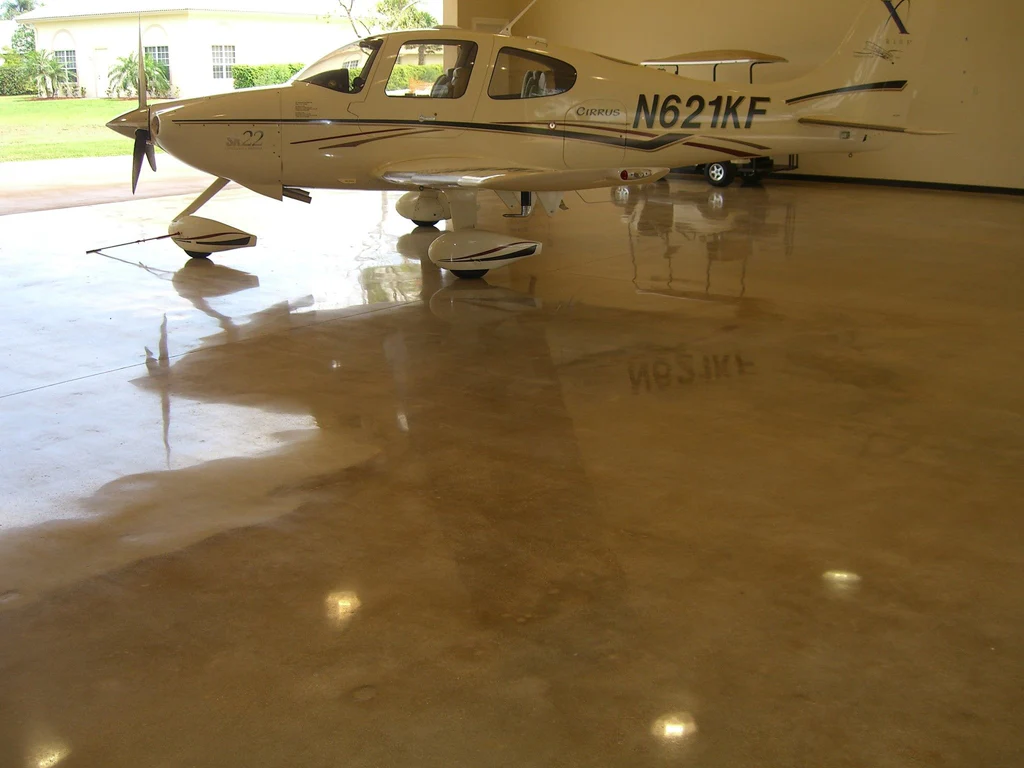
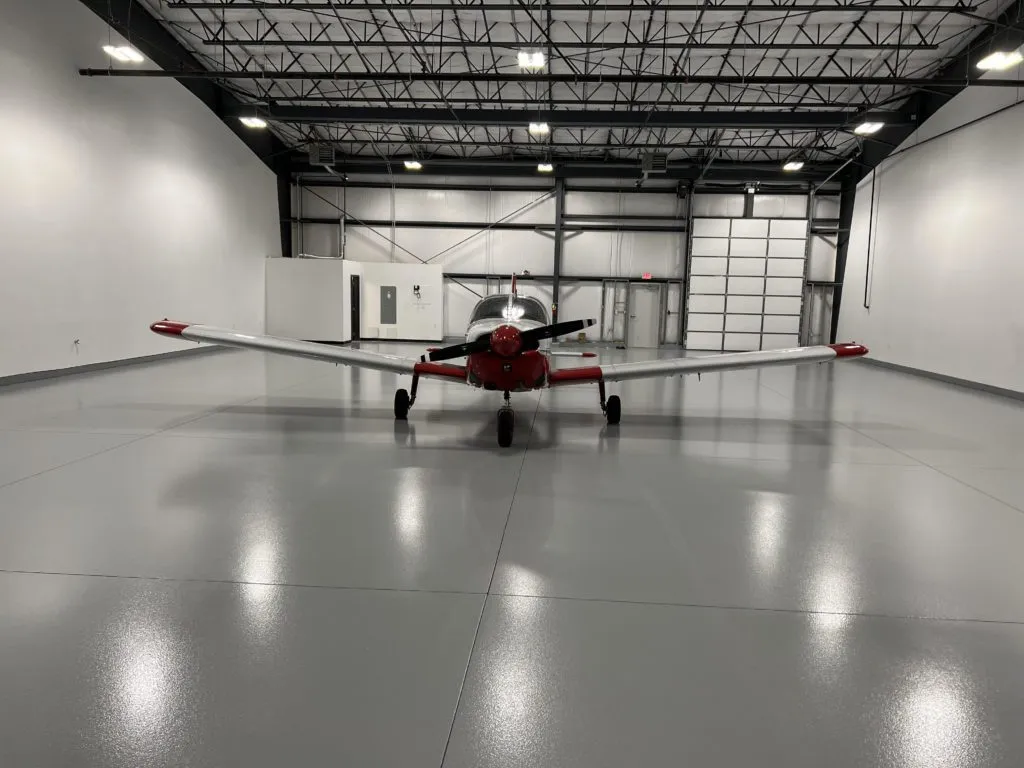
What it is: Densified and polished concrete or cementitious overlays that create a hard, smooth wearing surface.
Strengths: Cost-effective over existing concrete, durable, excellent load-bearing capacity when properly finished.
Best for: Large open areas where extreme chemical exposure is limited; ideal for hangars with heavy wheel loads.
Trade-offs: Polished concrete can be slippery when wet unless treated for texture; chemical resistance depends on densifiers/sealers.
5. MMA (Methyl Methacrylate) Systems

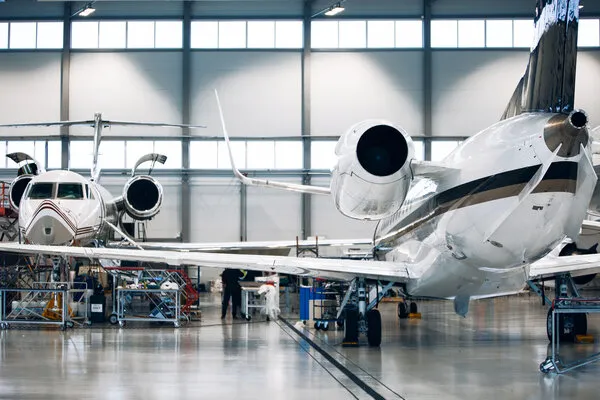
What it is: Fast-curing resin systems suitable for quick repairs and overlays; operate in low temperatures.
Strengths: Extremely fast curing (can open in hours), good chemical resistance.
Best for: Rapid repair or refurbishment windows.
Trade-offs: Strong odor during installation; temperature-sensitive and more expensive.
6. Conductive / ESD Flooring
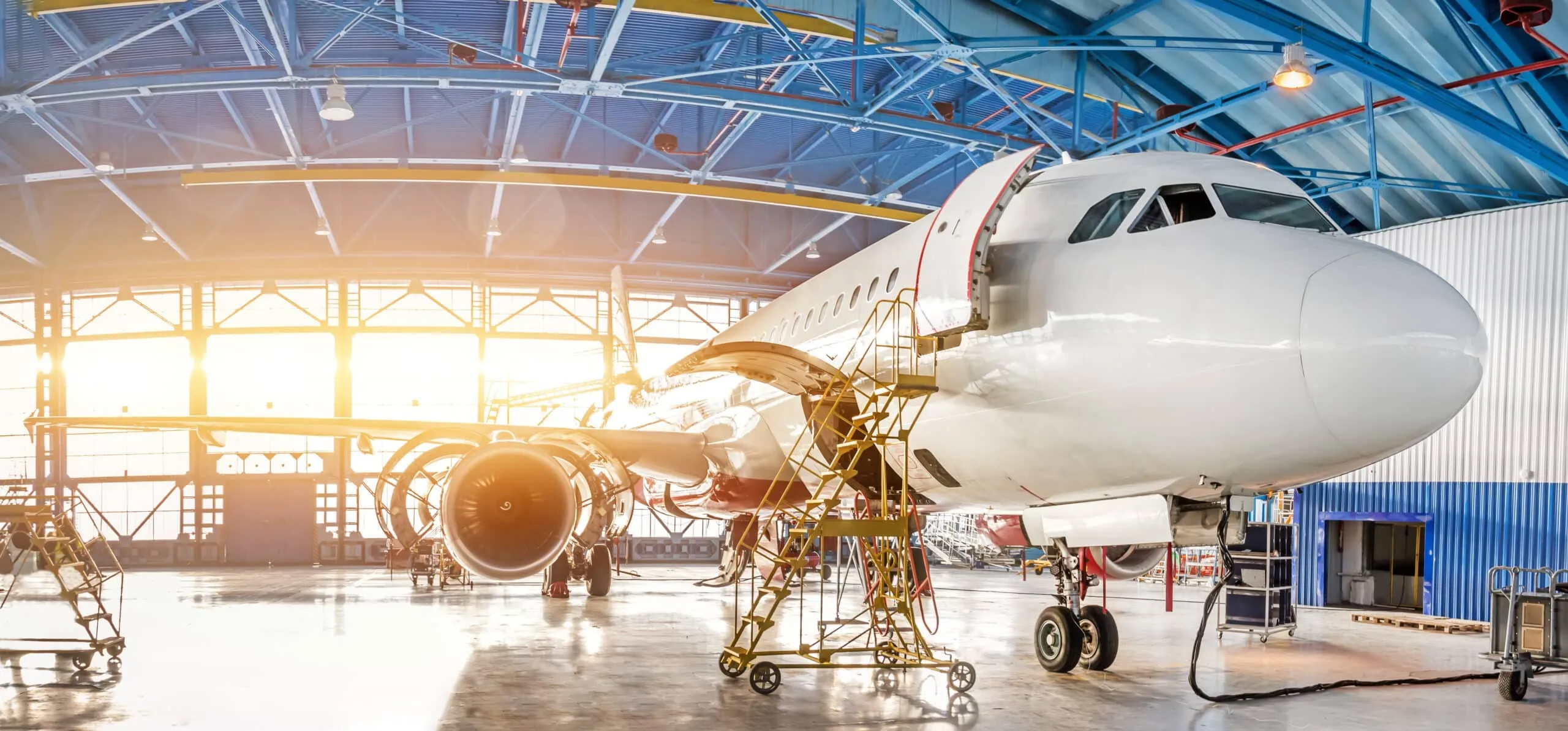
What it is: Resinous systems with conductive fillers and grounding to control electrostatic discharge.
Strengths: Protects sensitive avionics and reduces ignition risk in fuel-handling areas.
Best for: Areas with fueling, avionics work, or explosive vapor risk.
Trade-offs: Requires strict ground continuity testing and regular verification.
How to choose the right system for Pakistan
Selecting the correct solution depends on functional requirements, budget, and local conditions. Use the following decision checklist.
1. Define performance requirements
Load profile: aircraft types (light general aviation vs heavy cargo), frequency of movement, static wheel loads.
Chemical exposure: expected contact with Jet A, hydraulic fluids, de-icers, solvents.
Traffic & abrasion: tugs, forklifts, tooling, maintenance jacks.
Safety needs: slip resistance, ESD requirements, fire codes.
2. Consider environmental conditions
Temperature & humidity: Pakistan’s hot summers (and humid coastal regions) can affect cure times and resin selection. Polyaspartics and MMA are fast-curing and can help in hot conditions; however, very high ambient temps can accelerate cures and shorten working time.
UV exposure: If hangar doors are open and allow sunlight, choose UV-stable topcoats (polyurethane).
Substrate moisture: High slab moisture (rising damp) requires moisture mitigation (vapor barriers or moisture-tolerant primers).
3. Evaluate existing concrete
Slab strength & condition: Are there cracks, spalling, or weak laitance? Floors with poor substrate need repair or overlays.
Flatness & levelness: Aircraft require flat, predictable surfaces. Grinding and leveling may be necessary.
4. Maintenance & lifecycle cost
Calculate total cost of ownership: upfront material + substrate work + downtime + expected life + maintenance. Sometimes a higher initial cost (e.g., urethane cement) saves money over 10–15 years through reduced repairs.
5. Local availability & installation expertise
Check availability of specialized materials and skilled applicators in Pakistan. Some high-performance systems require certified installers.
Surface preparation & installation best practices
A high-performing floor begins with correct preparation — the most overlooked but critical phase.
1. Concrete Repair & Leveling
- Remove weak concrete, patches, and contaminated areas.
- Use polymer-modified repair mortars to fill spalls and deep defects.
- Tolerances: ensure flatness to aircraft tolerances — specify F-number or FF/FL targets if necessary.
2. Mechanical Surface Profiling
- Diamond grinding or shot blasting to achieve a defined surface profile (e.g., CSP 3–5) for bonding.
- Cleaning: vacuum and power-wash to remove dust and residues.
3. Moisture Testing & Mitigation
- Perform calcium chloride or in-situ relative humidity tests.
- If moisture is above manufacturer tolerances, install moisture mitigation systems (epoxy moisture barriers) or allow slab to dry.
4. Primer & Bonding Layers
Use recommended primers for the selected resin; for epoxy systems, priming reduces pinholes and improves adhesion.
5. Correct Mixing & Ambient Control
- Follow manufacturer mixing ratios precisely.
- Control ambient and substrate temperatures within recommended ranges; in Pakistan’s heat, work earlier in day or use shaded areas.
6. Expansion Joints & Crack Isolation
- Respect or replace expansion and control joints — do not rigidly fill joints with hard mortars that will crack.
- Use flexible joint profiles or saw-cut/crack-relief systems.
7. Curing & Quality Control
- Allow proper cure before loading; rapid cure systems can reduce downtime but must still meet testing criteria.
- Perform adhesion, hardness, and visual inspections; test for slip resistance and ESD (where applicable).
Safety, compliance and functional features
Slip Resistance
Choose textures and aggregate broadcast schedules to achieve required coefficient of friction for wet/dry conditions. Anti-slip grit or trowel-applied broadcast aggregates are common.
Chemical Resistance
For areas with direct fuel or solvent exposure, use urethane cement or high-grade epoxies specifically rated for hydrocarbon resistance. Topcoats may provide additional protection.
Fire & Smoke
Specify materials with low smoke and toxicity for enclosed spaces as required by local fire authorities and aviation safety standards.
ESD and Grounding
If required, select conductive epoxy or PU systems and ensure a reliable grounding grid with periodic testing. This is essential near fuel storage or avionics test areas.
Markings and Signage
Use highly durable, high-contrast line-marking systems for parking stands, taxi lanes within the hangar, safety zones and walkway demarcations. Thermoplastic or epoxy line paint is typical.
Maintenance Plan — Keep it working for decades
A planned maintenance program extends life and reduces unplanned downtime.
Daily/weekly cleaning: sweep and wash to remove grit and contaminants. Use mild, pH-neutral cleaners; avoid harsh solvents.
Immediate spill response: absorb and clean hydrocarbon spills quickly to prevent staining or surface attack.
Periodic inspections: check for delamination, cracking, and wear patterns every 6–12 months.
Top-up recoats: applying fresh topcoat layers extends life — schedule recoats per manufacturer guidelines (typically every 3–7 years depending on wear).
Repair program: have materials and procedures available for fast local repairs (patch kits, rapid cure mortars).
ESD verification: if conductive floor, test resistance monthly or per protocol.
Cost factors in Pakistan
Costs vary widely depending on system, surface condition, and labor availability. Main drivers:
- Substrate preparation: grinding/shotblasting and repairs can be 20–50% of project cost.
- System choice: urethane cement and high-spec ESD systems cost more than simple epoxy paints.
- Area size: larger hangars give better economies of scale; mobilization and logistics contribute on smaller projects.
- Downtime & phasing: phased installations to maintain operations increase complexity and cost.
- Material import: some high-performance resins may be imported which affects cost and lead time.
- Skilled labor: certified installers charge premium rates — but improper installation costs more long-term.
A rough comparative note (indicative, not a quote): basic epoxy coatings are the more economical option; high-performance urethane cement or conductive systems cost significantly more but deliver longer life and lower lifecycle cost under heavy use.
Common challenges and how to avoid them
1. Installing over a moist slab
Solution: test moisture, fix the root cause (vapor barrier) or use moisture-tolerant systems.
2. Short working windows in hot weather
Solution: use fast-reacting systems (polyaspartics/MMA), work early morning/evening, or climate-control substrate.
3. Poor adhesion and delamination
Solution: ensure mechanical profiling, correct primer, and avoid contaminant-laden concrete.
4. Slippery finish after fuel or water
Solution: specify anti-slip aggregates and test coefficient of friction under expected conditions.
5. Insufficient planning for expansion joints
Solution: design joint treatment that matches system flexibility and aircraft loadings.
Practical Recommendations for Pakistan
Assess loads first. If the hangar accommodates heavy cargo aircraft or frequent jacking operations, prioritize urethane cement or specially-formulated epoxy mortar systems with high compressive strength.
Prioritize chemical resistance in fueling and maintenance zones — use systems rated for hydrocarbon resistance and ensure spill containment design.
Use a layered approach. Commonly, a moisture mitigation primer (if needed) → body mortar or high-build epoxy → broadcast aggregate for texture → polyurethane topcoat gives a balanced combination of adhesion, strength, texture, and UV stability.
Work with certified installers. The performance of resinous floors is highly dependent on installer skill. Require references, sample patches, and on-site QC.
Plan phasing to keep operations running: section the hangar into bays and rotate work to limit downtime.
Document maintenance procedures and set performance KPIs (surface resistivity for ESD floors, slip tests, adhesion checks).
Example project brief (template)
Project: New hangar floor — medium-sized maintenance hangar, 3,000 m²
Functional needs: Support narrow-body aircraft, fueling bay, office/workshop, avionics bench (ESD needed)
Recommended System
- Substrate repairs and shot blast (CSP 3–4)
- Epoxy moisture mitigation primer (if RH > manufacturer spec)
- 6–8 mm urethane cement mortar in high-load zones (parking & jacking areas)
- 3–4 mm epoxy broadcast system in general areas, sealed with polyurethane topcoat
- Conductive epoxy flooring strips to designated avionics bays, grounded and tested
- Slip aggregate broadcast in fueling and ramp zones
Maintenance: Monthly inspection; yearly touch-ups; full recoat of topcoat every 4–6 years
This template can be adapted to local constraints and finalised with an installer.
Final thoughts & next steps
Investing in the right hangar flooring is investing in safety, operational uptime, and long-term cost savings. For airport authorities, MROs, and private operators in Pakistan the key is to match system performance to actual loads and exposures — not just upfront cost.
If you’re planning a hangar floor project in Pakistan, here’s a short checklist to get started:
- Document aircraft types and operational activities.
- Test slab condition and moisture content.
- Define chemical exposures and safety needs (ESD, slip coefficients).
- Ask for installer qualifications and sample panels before full installation.
- Budget for substrate prep — it will make or break performance.
- If you’d like, I can:
- Draft a project specification sheet tailored to your hangar size and aircraft types, or
- Prepare a comparison table (material, expected life, estimated maintenance, indicative cost) for the flooring options above.
Contact Unicorn Flooring which hangar size, aircraft classes, and primary activities you have in mind and I’ll produce a tailored specification and an indicative cost breakdown.
FAQ'S
With proper selection and maintenance, high-quality systems last 10–25+ years. Life depends on traffic, chemical exposure and maintenance.
Yes, but you must choose fast-curing systems and manage working time — very high temperatures accelerate curing and shorten pot life. Work earlier in the day or use shaded/tented installations.
Polished concrete can handle wheel loads well and is cost-effective, but it needs sealers or densifiers for chemical resistance. For heavy chemical exposure or jacking zones, consider overlay systems or urethane cement.
If the area handles fuel, volatile chemicals, or sensitive avionics, ESD flooring is strongly recommended. Risk assessment should guide the requirement.
Depends on the system. Rapid cure systems (MMA/polyaspartic) can be ready in hours; epoxies may require 24–72 hours; heavy mortars or urethane cement may need longer per manufacturer cures.
